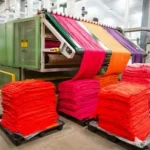There are so many great apps, from time managers to IM software. However, in the age of so many app builders that work on drag-and-drop principles, and even professionals are developing apps at quite affordable prices, one must wonder – why not make a custom app?
Let’s be realistic and admit that app developers bank on the idea that their apps have a wide application. As a business developing your work app, you can add all the features to make your job easier. In a way, you can have it all in a single tool instead of using a combination of software.
Here’s how you can get the most out of it.
-
Table of Contents
Real-time communication
The first thing your app will need is a chat service. This way, you’ll establish a clear line of communication with the team back at the headquarters at any given minute.
A great thing about an integrated app is that the work-related messages won’t interfere with your private messages. Imagine trying to communicate with people back at the HQ via your Instagram DMs; how distracting would that be? Imagine having to go through volumes of memes to find your latest work order. Not only would it be time-consuming, but it would be so distracting that, halfway through, you would completely forget what you were looking for.
Sure, you could get a tool like Slack; however, if you’re already developing an app, the most elegant solution is integrating this feature.
However, real-time communication doesn’t just mean chatting. There’s more to it than just that. For instance, your teams can communicate through a schedule. Moving a task card from one column to another or changing/choosing a different label will communicate that you’re done or nearly done.
Also, if you educate your staff on how to make good passwords and protect their device, all of this communication will remain safe and encrypted.
-
Scheduling and dispatching
The most important thing about the mobile app for a field team is its ability to keep and manage a dynamic schedule. You need to know exactly how many teams are currently available, how many are occupied, and how long it will take for some of them to become available.
You need to update this schedule in real-time, make all of these update processes as automatic as possible, and make the data in question available to all your teams. Members of these teams need to access this data, including schedules and work orders, via their phones.
More importantly, you must make a simple and graphic UI platform. This way, teams in the rush can understand the situation at a glance. Color-coding is generally an effective method.
Another thing that’s vital for field service companies is the data collection on the activities of their teams. How effective are their teams? Where are the most common hold-ups, and what can you do to make this right? A good thing about a dedicated app is that you can extract all the relevant data. During the development, you can improve the record-keeping system and make sure that relevant data is kept in structured form (for the sake of simplicity).
-
Location tracking
Field services seldom revolve around a single team. If you had a single team, knowing where they are at any given moment wouldn’t be a challenge. However, what if there is more than one team or a fleet instead of a company vehicle? In this scenario, location tracking would be invaluable.
It’s not just that; there are two more things to worry about. The first one is the disturbance. Your team is working; you don’t want to disturb them to ask their whereabouts when you can just check it via an app.
Second, is your team really where they say it is? We’re not saying you should doubt your team, but if you never check up on them, even hard-working specialists will sometimes feel tempted to take the easy route. With an app, you can check up on them at any moment but do so in a way that doesn’t invade their privacy or communicate that you don’t trust them. After all, GPS tracking is there for convenience and coordination, not spying, which is a compromise that can satisfy everyone.
-
Offline access
While collaboration platforms and schedules must be updated in real-time, you must ensure that some files, especially those vital for the current task, are downloaded to a device to be accessible offline.
That’s the thing with remote teams; you never know what conditions they will work in. This is why some key features must be available to them regardless of whether they have internet access.
Remember that some field teams will only be called out in emergencies. This means they may be in areas where a signal is weak or completely absent. This is also great for work in remote locations, where grid coverage is not as great.
-
Support for different file formats
File-sharing is a great tool, but you must envelop different file formats to cover all bases. For instance, you may want to take a photo when you first get to the scene and as you’re about to leave. This would keep you safe from the legal standpoint, prove that you’ve done the work, and help field teams show what they’ve done to people back at the HQ without using too many words.
Ideally, you could capture photos and video in-app without taking a photo first and sharing the file later. This is a minor quality-of-life improvement, but you can always take it up a notch. Filters and AR enhancements can become invaluable work tools. Remote measurements are just some of the things that you should focus on.
Wrap up
Ultimately, the best way to create a mobile app for your field services is to break down your business process and think about how an app could improve it. Communication, schedules, and reports are the first three things you should focus on. Then, you can afford to improve your quality of life or two. Also, remember that when making your app, you can upgrade it and add new features whenever and however you see fit.











